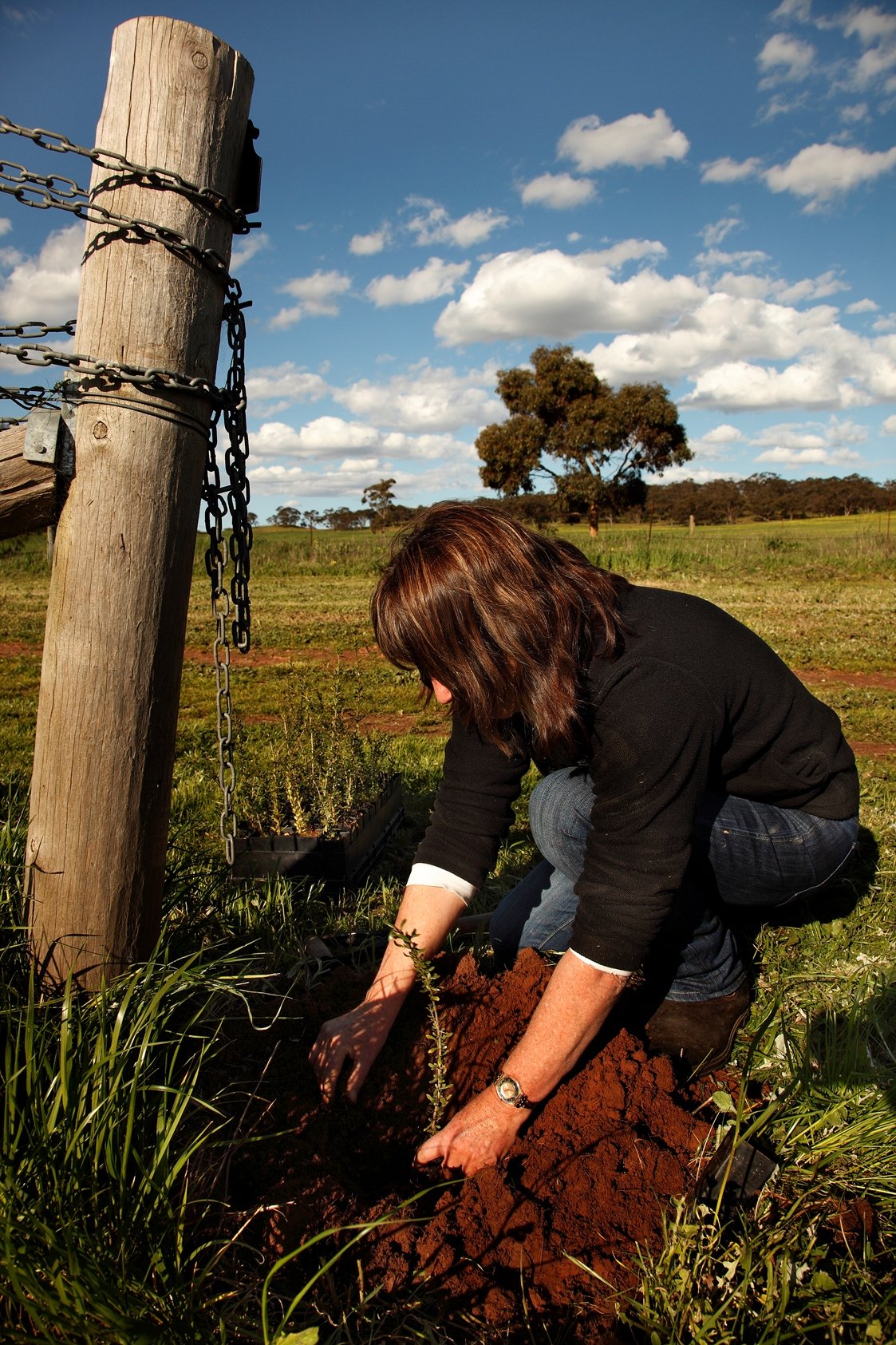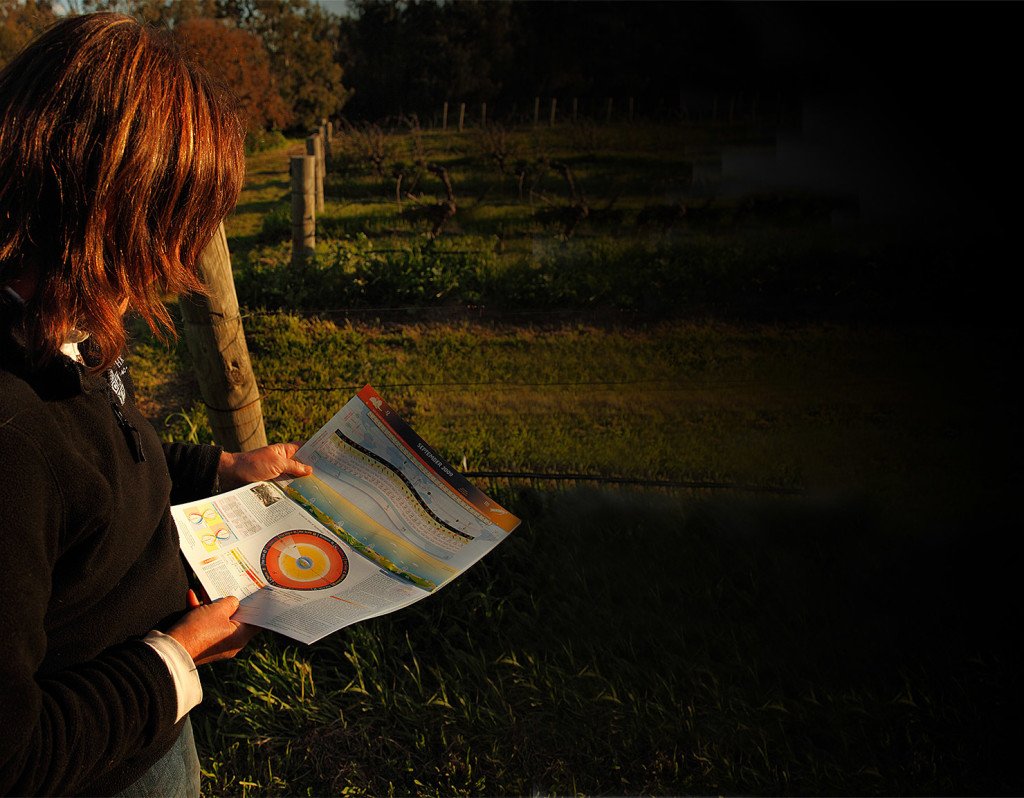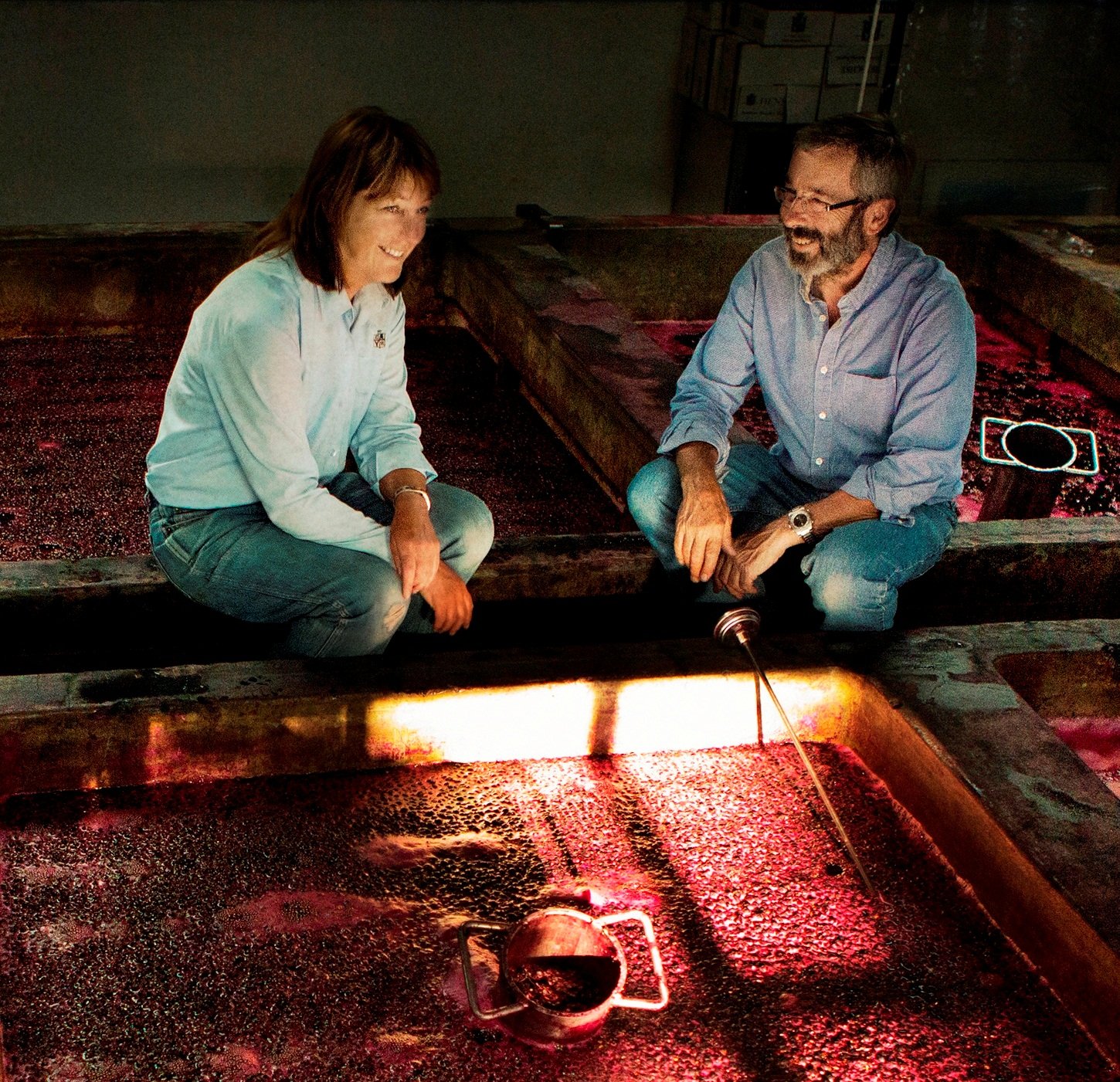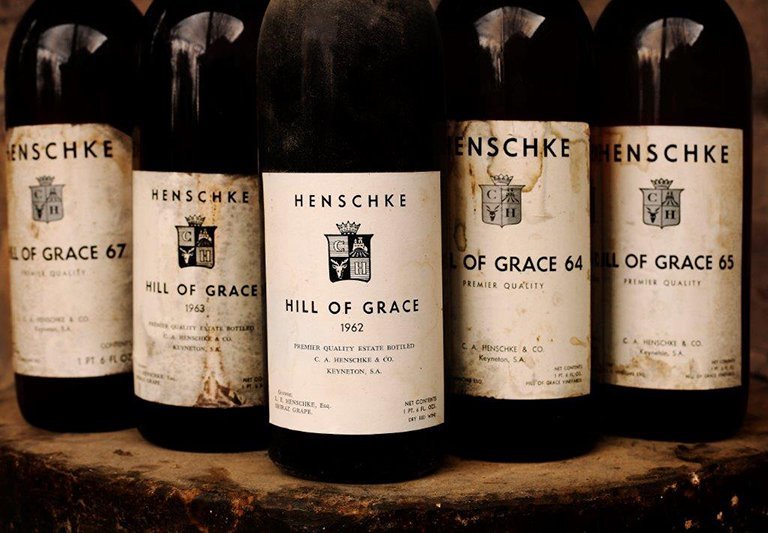News
Australia’s most famous single-vineyard wine, Henschke Hill of Grace 2012 was awarded the hotly contested ‘Wine of the Year’
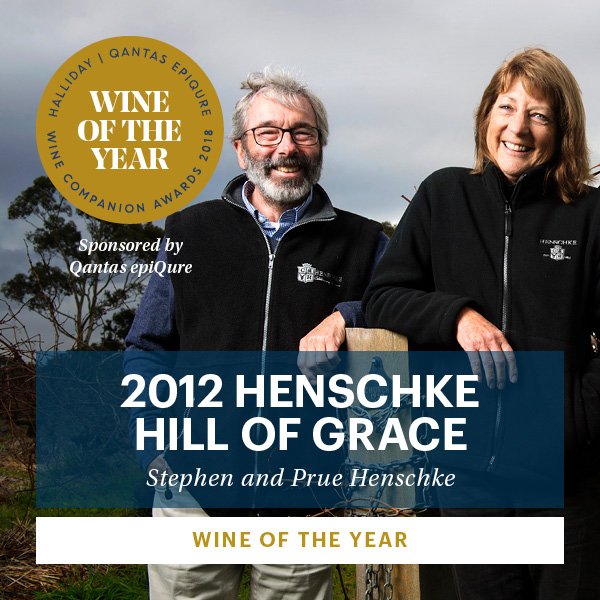
Australia’s most famous single-vineyard wine, Henschke Hill of Grace 2012 was awarded the hotly contested ‘Wine of the Year’ and ‘Best Shiraz’ titles at the fifth annual Qantas epiQure Halliday Wine Companion Awards ceremony, held on Wednesday night, 2 August in Melbourne.
Fifth-generation winemaker, Stephen Henschke was thrilled with the result after only launching the exceptional 2012 vintage of Hill of Grace Shiraz on 1 May 2017.
“It is an absolute honour to receive these accolades. Hill of Grace vineyard is a special site. The vineyard is only made up of 4 hectares of shiraz ranging from 70 to over 150 year old vines. The wine really is history in the bottle,” said Stephen.
This award acknowledges Stephen’s pioneer ancestor Nicolaus Stanitzki who planted the vineyard in 1860 and his father Cyril, a pioneer of single-vineyard table wines, who produced the first vintage of Henschke Hill of Grace in 1958 when those original vines were already almost 100 years old.
Henschke Hill of Grace is the most celebrated of the wines crafted by Stephen and Prue Henschke.
Every vintage from the revered single-vineyard Hill of Grace is a limited release, but some are more limited than others. Just one barrel was produced in 2003 with extremely tiny vintages for 2013 and 2014. There was no Henschke Hill of Grace made in 1960, 1974, 2000 and 2011.
“My viticulturist wife Prue has done incredible work in this vineyard, looking after such old vines with organic and biodynamic principles. Her work is already showing huge benefits in soil health and moisture retention for these pre-phylloxera, dry-grown sentinels. Hill of Grace Shiraz is a reflection of the wonderful flavours and balance this site can achieve, and the separate parcels are ‘nursed’ in the winery using very gentle, traditional open-top fermentation techniques.”
The awards are based on the reviews in the 2018 Halliday Wine Companion book, published by Hardie Grant in paperback and on sale nationwide from Thursday, 3 September.
Stephen and Prue were delighted to find an additional 38 wines from their portfolio reviewed in the 2018 Halliday Wine Companion, with no wine being scored below 90 points.
“It’s fantastic to see Hill of Roses 2010 and Mount Edelstone 2014, wines that have shaped the Henschke story, so high up on the list,” Stephen remarked.
An extended profile of Stephen and Prue Henschke will feature in the next issue of Halliday Wine Companion magazine, on newsstands from early September. winecompanion.com.au
2016 Vintage Reports: Eden Valley, barossa Valley and Adelaide Hills
EDEN VALLEY – 2016
The 2016 vintage began with well below-average winter rainfall, followed by a warm and dry spring, which enhanced flowering and set to give average to above-average yield potential. Low disease pressure was maintained by one of the hottest Decembers on record, though temperatures cooled down in the New Year and rainfall around veraison in late January brought relief to the ancient, dry-grown vines. This was followed by further rainfall in early March which eased the stress on all varieties. The fruit matured with an earlier harvest, as predicted due to an early Easter. Open, light and airy vine canopies allowed for good flavour, sugar and colour and mature tannins to develop at harvest, which was overall characterised by average yields but very high quality.
BAROSSA VALLEY – 2016
The 2016 vintage began with well below-average winter rainfall, followed by a warm and dry spring, which enhanced flowering and set to give average to above-average yield potential. Low disease pressure was maintained by one of the hottest Decembers on record, though temperatures cooled down in the New Year and rainfall around veraison in late January gave relief to the old, dry-grown vines. This was followed by further rainfall in early March which eased the stress on all varieties. The fruit matured with an earlier harvest, as predicted due to an early Easter. Open, light and airy vine canopies allowed for good flavour, sugar and colour and mature tannins to develop at harvest, which was overall characterised by average yields but very high quality.
ADELAIDE HILLS – 2016
The 2016 vintage began with below-average winter rainfall, followed by a warm and dry spring, which enhanced flowering and set to provide average to above-average yield potential. Low disease pressure was maintained by one of the hottest Decembers on record, though temperatures cooled down in the New Year and rainfall around veraison in late January/early February brought relief to our early-ripening varieties in the Adelaide Hills, resulting in excellent conditions for natural acid retention and clean fruit. This was followed by further rainfall in early March, which eased the stress on the late-ripening varieties, allowing them to mature towards a predicted earlier harvest due to an early Easter. Open, light and airy vine canopies allowed for good flavour, sugar, colour and mature tannins to develop at harvest, which was overall characterised by average yields but very high quality.
Hill of Grace Vintages 2006 -2011 by Stephen Henschke.
Over 165 years ago Johann Christian Henschke came from Silesia to settle and farm in the Eden Valley region. By the time third-generation Paul Alfred Henschke took over the reins in 1914, the famous Hill of Grace vines were more than 50 years old. They were planted around the 1860s by an ancestor, Nicolaus Stanitzki, in rich alluvial soil in a shallow fertile valley just north -west of the winery. The red-brown earth grading to deep silty loam has excellent moisture-holding capacity for these dry -grown vines, which sit at an altitude of 400m, with an average rainfall of 520mm. Hill of Grace is a unique, delineated, historic single vineyard that lies opposite a beautiful old Lutheran church which is named after a picturesque region in Silesia called Gnadenberg, meaning Hill of Grace. Cyril Henschke made the first single-vineyard shiraz wine from this vineyard in 1958 from handpicked grapes vinified in traditional open-top fermenters.
Vintage 2006
The 2006 vintage shaped up as another high quality year but with only average yields in the Eden Valley. After a late break in mid June 2005, winter and spring rains were some of the best for years in the lead - up to flowering in early summer. Some varieties such as riesling and shiraz suffered more than others from poor set, leading to‘hen and chicken’. While there was some damage in Eden Valley from frost, this had only minor impact on the overall yield; however, yields in most varieties were down by 15-20%. The summer was mild with southerly winds, reminiscent of 2002. Brief heat waves occurred in late January and mid February but were early enough not to affect quality, with only minor sunburn on exposed fruit. Whites were nearly all picked by the end of March, an unusual situation.
Wine Description
Deep crimson in colour with violet hues. Lifted blueberry and blackberry fruits on the nose with hints of crushed sage and confident, ripe herbal notes. The plum and sage flavours follow through on the palate that is beautifully structured with fine-grained tannins and a long, lush finish.
Vintage 2007
The 2007 vintage shaped up to be another high quality year but with significantly reduced yields in Eden Valley. Despite an early winter break, rainfall during winter and spring was the worst for years in the lead up to flowering. There was significant spring frost damage in Eden Valley, with yield losses of 20-25%, compounded by the drought and lack of subsoil moisture with overall losses of 50%. Brief heat waves occurred during January; otherwise, it was mild and dry. At the end of January a tropical air mass connected with a cold front to bring good rains to the agricultural areas of South Australia, with flooding in the north. The 70mm rainfall fell steadily over four days, coinciding with veraison, which freshened up the vine canopy to assist with ripening the fruit for harvest. February was recorded as the hottest for 100 years, which brought the already reduced crop to an earlier ripening phase.
Wine Description
Deep crimson with purple hues. Sweet, fragrant, exotic aromas of spicy red and black berry fruits, supported by plum, anise, tar and truffles and a hint of cedar. An elegantly fruited palate shows rich, complex flavours of forest fruits and cassis with underlying notes of black pepper spice, while the surprisingly restrained powdery tannins provide layers of texture for a long and luscious finish.
Vintage 2008
The 2008 vintage in Eden Valley was preceded by an average rainfall and a mild and unusually frost- free spring with regular rainfall periods. Fine flowering weather meant good set despite the expectation that the previous drought year of 2007 would affect yields. The vines also showed surprisingly vigorous growth. A dry and hotter than average early summer caused smaller berry and bunch size. Although temperatures climbed to over 40C around New Year and in mid-February, the weather from mid-January through February was the coolest for 30 years, allowing amazing development of fruit colour, flavour and maturity. In early March, South Australia suffered an unprecedented record heat wave of 15 days over 35C. The unexpected searing heat seemed never-ending and resulted in stressed vines, significant leaf drop, escalating sugar levels in the fruit and significant shrivel. A cool change followed, which brought relief. Selective early morning handpicking, leaving shrivelled fruit on the vines, gave the best quality, resulting in some amazing intensely coloured and flavoured reds, in particular shiraz.
Wine Description
Intense deep crimson in colour. The nose is attractive and enticing with aromas of sweet blackberry, blueberry, Satsuma plum and rhubarb, with characteristic nuances of oriental spices, black tea leaves, anise, tar and cedar. The palate is rich and concentrated with spicy plum, crushed herbs and Dutch licorice flavours. An amazing balance of acid, fruit intensity, weight and length create a powerful palate that finishes with long, fine tannins.
Vintage 2009
The 2009 vintage was preceded by another cold, drought winter, with 399mm rainfall in Eden Valley for the year (a good year would see 500mm). It was the coldest August since 1951. Spring had a few heat spikes up into the mid to high 30s, some frost damage in low-lying areas, but very little rain during September and October. In fact, it was the driest September for 30 years and the driest October on record. Staggered flowering resulted from cool weather which reduced the fruit set. Some varieties were also pruned back hard to just a few spurs to allow them to survive with no water. Rain arrived in mid- December with around 65mm recorded, making it the wettest month of the whole year. The cool southerlies continued through into the new year, reminiscent of 2005. December didn’t record any days over 32C. January tended warm to hot with a couple of heat spikes into the high 30s and low 40s. Late January brought a record six days over 40C, not seen since 1908, causing vine stress, exacerbated by drought conditions and empty dams, followed by another week of hot weather culminating in a 46C day on Black Saturday on February 7. Fortunately subsequent weather was mild and dry, with perfect ripening weather from March 1 moving into autumn mode. A strong change brought a general rain across the state with 10-20mm in early March,which helped with ripening and flavour development. The Indian summer in late March brought ripening forward with all the whites finished and in the winery by early April.
Wine Description
Deep red with crimson hues. Complex aromas of red currants, blackberry and marzipan with hints of five spice, dried herbs, black pepper, smoked charcuterie and layers of fine French oak. The palate is deep, rich and textural with a beautiful expression of berry fruits and spice,finishing with long, fine velvety tannins.
Vintage 2010
The 2010 growing season was preceded by above average winter rainfall. Spring was mild with little frost damage and gave us an even budburst. The weather remained cold and wet through spring, which held back growth until a two-week high 30s heat wave in November affected flowering and fruit set. Spring rains continued into early summer right through until mid-December, making it the wettest year since 2005. The vines responded to the heat and grew vigorously until early January, developing lush canopies, but bunch development suffered as a result.
A roller-coaster ride of heat spikes and cool changes continued through a warm summer with occasional thunderstorms. The vines went through veraison a week earlier than 2009. Lower yields coupled with the mild ripening period resulted in concentrated fruit. Vintage began a week earlier than 2009 and was in full swing by mid-February. The white vintage was all but finished a month later while the red harvest continued with deeply coloured, well-balanced grapes being picked during mild, dry conditions until the end of April.
Wine Description
Very deep crimson with violet hues. An alluring nose of exotic spices, cracked black pepper, licorice, sage and crushed herbs, complemented by sweeter notes of blackberry, plum and cedar. The complex palate has dark, brooding flavours, rich layers, texture and balance of natural acidity, while the refined, silky tannins provide incredible length.
